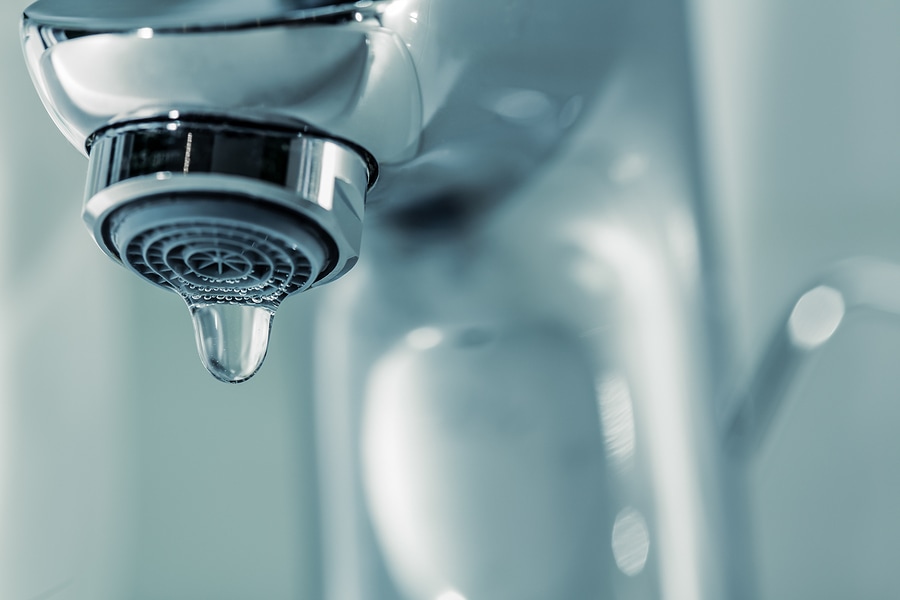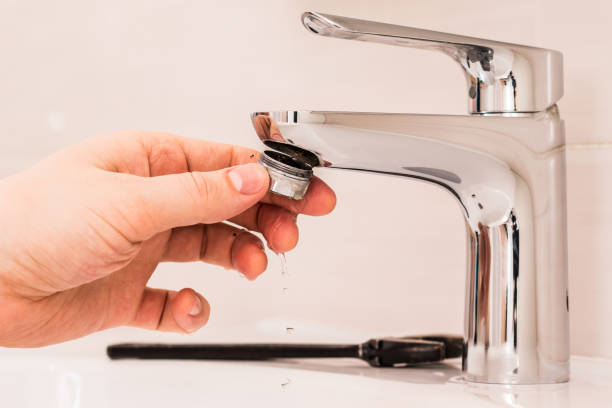The article author is making a few good pointers on How to Fix a Dripping or Leaky Faucet overall in the article beneath.

Trickling faucets could feel like a minor trouble, however their impact exceeds just the aggravation of the noise. From wasting water to incurring unnecessary monetary prices and health risks, neglecting a trickling tap can lead to various consequences. In this post, we'll explore why it's critical to resolve this usual house concern promptly and effectively.
Wastage of Water
Ecological Effect
Dripping taps contribute substantially to water wastefulness. According to the Epa (EPA), a solitary faucet dripping at one drip per secondly can lose more than 3,000 gallons of water per year. This not just strains water sources however also affects environments and wild animals depending on them.
Financial Costs
Increased Water Costs
Beyond the ecological effect, leaking taps can inflate water expenses significantly. The built up wastefulness over time equates into greater energy expenditures, which can have been prevented with prompt repair work.
Possible Residential Property Damages
In addition, long term leaking can result in harm to components and surfaces bordering the tap. Water build-up can create staining, rust, and even architectural concerns if left unattended, leading to extra fixing costs.
Health Issues
Mold and Mold Development
The consistent existence of dampness from a dripping tap develops an optimal setting for mold and mildew and mold development. These fungis not just endanger interior air high quality but likewise position health risks, specifically for people with breathing conditions or allergies.
Waterborne Conditions
Stagnant water in dripping faucets can come to be a breeding place for microorganisms and other virus, enhancing the threat of waterborne conditions. Contaminants such as Legionella microorganisms thrive in stagnant water, potentially leading to severe illnesses when ingested or inhaled.
DIY vs. Professional Repair
Pros and Cons of DIY Fixing
While some might attempt to deal with a leaking tap themselves, DIY repair services come with their very own collection of difficulties. Without correct knowledge and tools, do it yourself attempts can intensify the concern or lead to incomplete fixings, lengthening the trouble.
Benefits of Hiring an Expert Plumber
Working with a specialist plumber ensures that the underlying reason for the leaking faucet is attended to successfully. Plumbing professionals have the experience and tools to detect and fix faucet issues efficiently, conserving time and minimizing the risk of additional damages.
Step-by-Step Guide to Taking Care Of a Dripping Faucet
Devices Called for
Before trying to fix a dripping faucet, gather the required tools, including an adjustable wrench, screwdrivers, replacement parts (such as washing machines or cartridges), and plumber's tape.
Usual Tap Issues and Their Solutions
Determine the type of faucet and the details concern triggering the drip. Common problems consist of worn-out washers, corroded shutoff seats, or defective O-rings. Describe maker instructions or on-line tutorials for step-by-step guidance on fixings.
Preventive Measures
Regular Upkeep Tips
To prevent dripping taps, carry out regular maintenance such as cleaning aerators, inspecting for leaks, and changing worn-out components promptly. In addition, consider installing water-saving gadgets or upgrading to much more effective components.
Importance of Prompt Repair Works
Resolving trickling faucets as soon as they're discovered stops more water wastefulness and possible damages, ultimately saving both water and cash in the long run.
Impact on Home Value
Understanding of Well-Maintained Home
Preserving a building in good condition, consisting of attending to maintenance concerns like trickling faucets, enhances its regarded worth and desirability among potential customers or occupants.
Influence on Resale Worth
Qualities with well-kept plumbing components, including taps, command higher resale worths in the realty market. Resolving dripping faucets can contribute to a favorable perception during home assessments and settlements.
Environmental Obligation
Specific Payment to Preservation
Taking responsibility for repairing dripping taps aligns with wider efforts towards water preservation and ecological sustainability. Every individual's activities jointly make a considerable influence on preserving valuable sources.
Sustainable Living Practices
By prioritizing timely fixings and adopting water-saving practices, people add to lasting living practices that benefit both present and future generations.
Conclusion
Dealing with a trickling tap surpasses simple ease; it's a necessary step towards saving water, decreasing monetary expenses, and protecting wellness and property. Whether with DIY repair work or professional aid, doing something about it to deal with dripping faucets is a tiny yet impactful method to promote liable stewardship of resources and contribute to a healthier, a lot more sustainable future.
How to Fix a Leaky Faucet: Step-by-Step Repair Guide
A leaky faucet may seem like a simple annoyance, but if it's not fixed promptly, that leak could cost hundreds to potentially thousands. From water damage to mold, mildew, and high water bills, even a tiny leak can be catastrophic if left unattended. Damage like this can even affect the overall value of your home, so it's important to take the right approach for leaky faucet repair. You may need the help of a plumber in some cases, but we've got a few tips you can try on how to fix a leaky faucet before calling the pros.
Four Faucet Types
When you're learning how to fix a leaky faucet, the first step is knowing what kind of faucet you're working with! There are four common types.
Cartridge Faucets
Cartridge faucets come in one- or two-handled varieties. In one-handled cartridge faucets, hot and cold water combines in a single cartridge. In the two-handled versions, hot and cold water are controlled separately and mixed in the faucet.
Ball Faucets
Ball faucets have a single lever you push up and down to adjust the pressure and rotate to change the temperature. A slotted metal ball controls the amount of water allowed into the spout.
Compression Washer Faucets
They're the oldest type of faucet, but they're still used in many homes — especially older ones. Compression faucets have two separate handles that, when turned, raise or lower the washer that seals a water valve. This valve stops water from flowing through the faucet when it is turned off.
Disc Faucets
Disc faucets rarely need to be repaired due to their maintenance-free design. The water flow is controlled by two discs — the upper one raises and lowers against a fixed lower disc, creating a watertight seal. If your disc faucet starts leaking, you may need to replace the seals or clean residue buildup from the inlets.
Fixing a Leaky Faucet
Step 1: Turn Off the Water
Whether you're learning how to fix a leaky bathtub faucet or how to fix a leaky kitchen faucet, always turn off the water supply to your working area when you're fixing a leak. The last thing you want is a flood added to your list of things to fix.
Look for the shutoff valves below your sink or around the tub and turn them clockwise to stop the water flow. If your faucet doesn't have shutoff valves, you may need to turn off the water for the whole house. Check to make sure it's off by turning the faucet on. If nothing comes out, you're ready to start the repair.
Step 2: Take Apart the Faucet
How you disassemble your faucet depends on the type of fixture you have. You can use a flathead screwdriver to remove the caps on top of the handle or handles for cartridge and compression faucets. Inside, you should see handle screws. Unscrew these with a screwdriver to remove the handle.
Disc- and ball-style faucets will typically have an inlet screw near the handle, and removing that will reveal the interior of the faucet.
Detach the Valve Stem
For cartridge- and compression-style faucets, you'll see the inner valve stem or cartridge once you remove the faucet handles. If you have a compression faucet, unscrew the brass valve stem. If you have a cartridge faucet, pull out the cartridge. If your cartridge has been in place for a while, it may require some tools or extra force to remove it due to mineral deposits.
Examine and Replace Parts
Once you've removed the parts, check them out to confirm what needs to be replaced. You may see corroded rubber washers, O-rings, stems, or cartridges. On a ball-style faucet, check the seats and springs for damage.
If you need to repair a leaky disc faucet, check the inlet and seals on the lower disc.
Once you determine what parts must be replaced, visit your local hardware store. Bring the damaged parts with you to ensure you can purchase the correct components to replace them.
Clean Valves and Faucet Cavity
If you've removed a stem or cartridge, you may notice mineral buildup in the faucet's threads. Use white vinegar to clean the valve seat by soaking it for a few minutes, then scrub it away with a soft toothbrush and rinse with warm water. You can also clean the interior of the faucet in the same way.
Reassemble the Faucet
Once your faucet is cleaned and the required parts have been replaced, it's time to reassemble it. Put the pieces back together and slowly turn the water supply back on. Doing this slowly is crucial because too much initial water pressure can damage the new hardware you've just installed.
https://homewarranty.firstam.com/blog/how-to-fix-leaky-faucet

Hopefully you liked our piece about What Causes Leaky Faucets & How To Fix Them. Many thanks for taking time to read our piece of content. I beg you set aside a second to promote this post if you enjoyed reading it. Thanks a lot for going through it.
Comments on “Which It's Essential to Correct a Leaking Faucet”